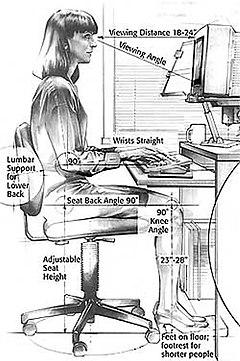 It is common for companies to invest in expensive office furniture in the belief that the furniture will encourage the worker to undertake tasks more safely. In most circumstances, this is a waste of money and a major distraction from managing safety throughout workplaces.
It is common for companies to invest in expensive office furniture in the belief that the furniture will encourage the worker to undertake tasks more safely. In most circumstances, this is a waste of money and a major distraction from managing safety throughout workplaces.
The safety message is also being confused by some OHS regulators. It is well-established that injured backs and other musculoskeletal injuries improve with movement rather than the traditional bed-rest. However this encouragement to move is not reflected in most of the advice for configuring workstations. Continue reading “Ergonomics advice does not always reflect the reality”

